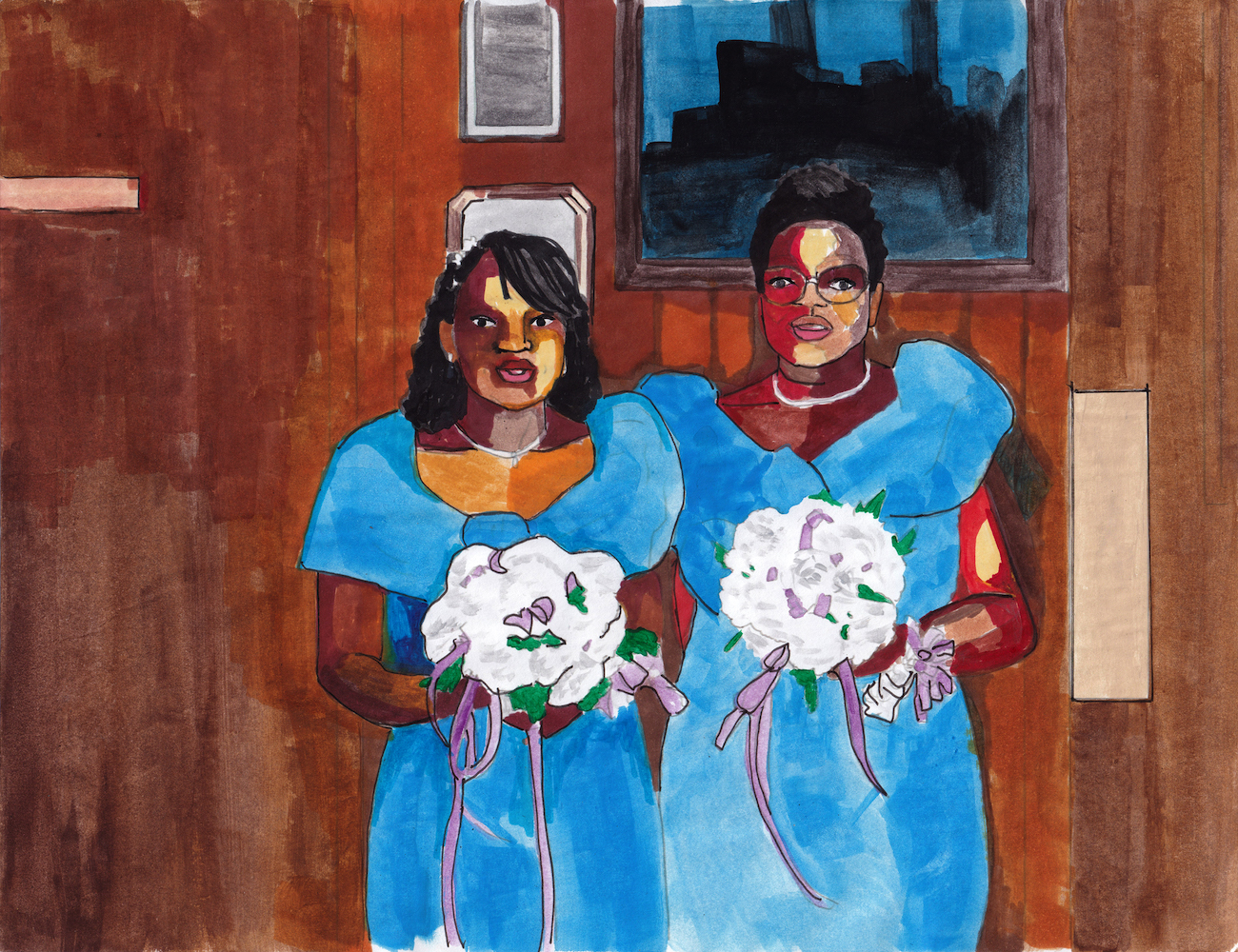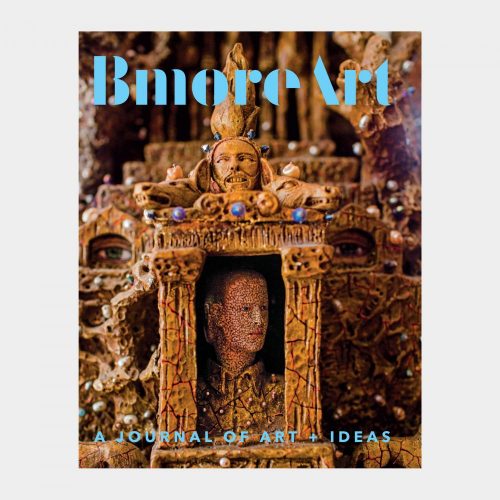You are an archive. Your cellular memory and the genetic structures that determined the color of your eyes are archives too, lasting proof about your ancestry. We don’t consider our bodies, memories, homes, or personal keepsakes to be archives. Many of us have learned to only associate archives with privileged institutions, exclusive spaces used to monumentalize antiquities of colonial conquest—the exotic remnants of decontextualized cultures. If you believe that archives are only designed to house vestiges of exceptionalism—narratives you must borrow, or obscure creations you can only view at secure locations, you could easily dismiss your own history. Inspired by a conversation about family history in Baltimore and an ongoing research effort by his sister Victoria Kennedy, multidisciplinary artist Derrick Adams began mining old photo albums to examine the relevance of personal archives.
“I thought about how I could capture my family beyond the snapshots in the photo album,” says Adams, “how can I bring them to a place of historical relevance that relates to me but also to the language of painting… the concept and the language of portraiture.”

Derrick Adams, “Family Portrait 1,” oil on canvas
Selections from the Family Portrait Series, a collection of oil works on canvas inspired by some of the family photographs Adams uncovered, is on view starting tonight, through November 22 at The Gallery in Baltimore City Hall.
For Adams, the archive is not only accessible, it is inherently familial. The portrait series depicts familiar scenes that unabashedly express the normalcy of Black life in Baltimore. In the face of recent commentary by number 45 that characterized Baltimore as crime-ridden and rat-infested, Adams’ portraits stand as affirming testaments about the dignity and humanity of our city.
Each image is universal enough to elicit some sense of nostalgia from anyone who views them, but also specific about the ways they reference Black cultural traditions. As a result, the Family Portrait Series triggers a critical reassessment about the elitist history of portraiture. Whose images have been deemed worthy subjects for archival projects? What context are the images of nonwhite subjects given when our likenesses are included in the archive? How do those images affect our cultural imaginaries and perspectives about the Other?

Derrick Adams, “Family Portrait 6,” oil on canvas
The paintings Adams renders make monuments of otherwise mundane moments. In “Family Portrait 7,” a young man sits rubbing his chin while a young woman oils his scalp. They are in a kitchen and her fingers are deep in the thick of his small afro. They are both looking at the viewer. In “Family Portrait 2,” a woman serves angles, poses strong with one hand on her hip. She’s clutch in her bright pink dress and contrasting green belt. Razor-sharp edges and gold accessories accentuate the beauty of her face. Her head is held high. Her gaze looks out beyond the viewer. In “Family Portrait 6,” a bearded man cradles an infant in his arms, surrounded by others who talk and look on. None of them acknowledge the viewer. All of the paintings in the Family Portrait Series are archives that chronicle intimate, innocent, and joyful reflections of Black life in Baltimore.
“My family is unique and precious to me,” Adams continues. “I hope that people who look at these images will look at Baltimore and look at the people of Baltimore in the same way that I see my family who are rooted in the city.”
Contemporaries of Adams, artists such as Jerrell Gibbs, Raelis Vasquez, Jordan Casteel, Henry Taylor, and Shan Wallace are each, in their own way, invested in the vital project of elevating and humanizing Black portraiture. Their determination to center and document the lived experiences of Black people, ordinary people, in America, is a radical work, an exquisitely decolonial work, that is necessary to develop more inclusive archives.

Derrick Adams, “Family Portrait 7,” oil on canvas
Recently, Adams purchased two residential properties in Baltimore with the intention of providing greater opportunities for artists in the city. One of them will be a month-long residency where an artist, a writer, a “culinary person,” and a musician will be invited to share space. “As a Baltimorean, the best experience of coming to Baltimore is not as a tourist, but through a community to really see the city,” Adams says.
The build out for the incubator and residency will take several years, but Adams is optimistic about the services that they could provide for artists in the future—especially in the relatively small city of Baltimore. “Because of global culture people are connecting more culturally, and I want to create the space where people can share and have conversations,” he says, “so that artists from my hometown can have the same exposure as others outside of the region.”

Derrick Adams, “Family Portrait 2,” oil on canvas
Where I’m From opens tonight, September 20, from 6–8 p.m. at The Gallery at Baltimore City Hall.
Images courtesy of the artist. Featured Image: “Family Portrait 5,” oil on canvas.







